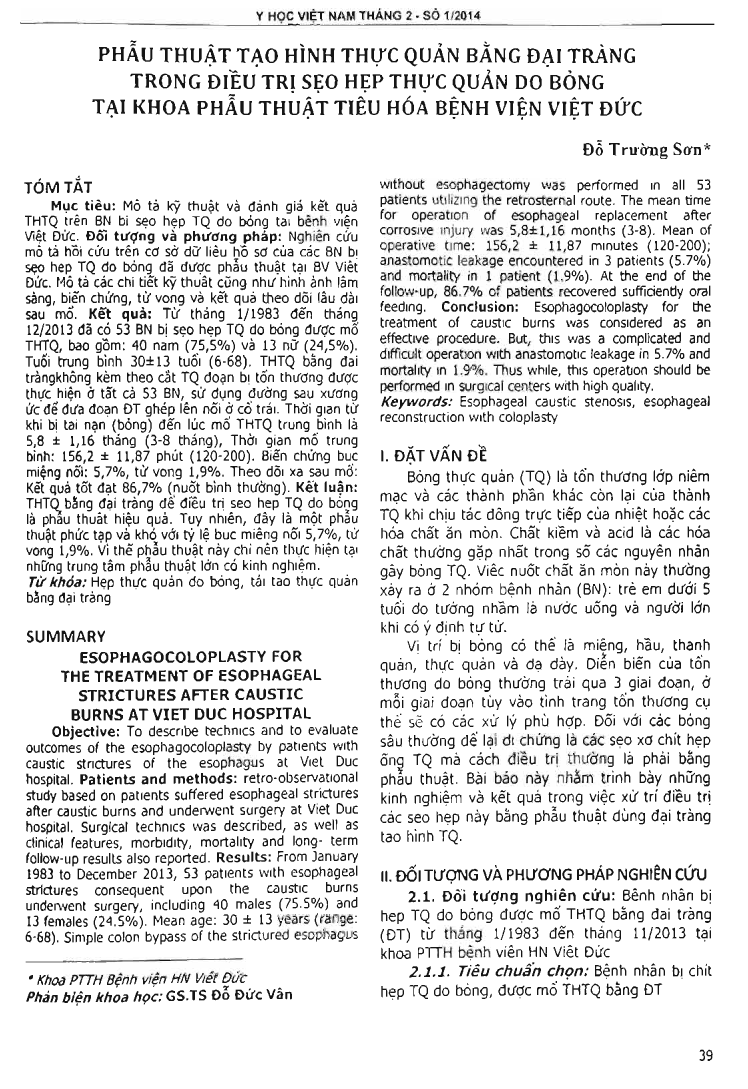
Objective: To describe technics and to evaluate outcomes of the esophagocoloplasty by patients with caustic strictures of the esophagus at Viet Duc hospital. Patients and methods: retro-observational study based on patients suffered esophageal strictures after caustic burns and underwent surgery at Viet Duc hospital. Surgical technics was described, as well as clinical features, morbidity, mortality and long-term follow-up results also reported. Results: From January 1983 to December 2013, 53 patients with esophageal strictures consequent upon the caustic burns underwent surgery, including 40 males (75.5 percent) and 13 females (24.5 percent). Mean age: 30 + or - 13 years (range: 6-68). Simple colon bypass of the strictu red esophagus without esophagectomy was performed in all 53 patients utilizing the retrosternal route. The mean time for operation of esophageal replacement after corrosive injury was 5,8 + or - 1.16 months (3-8). Mean of operative time: 156,2 + or - 11,87 minutes (120-200); anastomotic leakage encountered in 3 patients (5.7 percent) and mortality in 1 patient (1.9 percent). At the end of the follow-up, 86.7 percent of patients recovered sufficiently oral feeding. Conclusion: Esophagocoloplasty for the treatment of caustic burns was considered as an effective procedure. But, this was a complicated and difficult operation with anastomotic leakage in 5.7 percent and mortality in 1.9 percent. Thus while, this operation should be performed in surgical centers with high quality.
- Đăng nhập để gửi ý kiến
